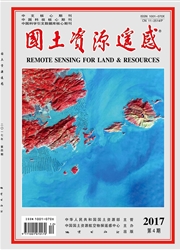

 中文摘要:
中文摘要:
利用实时探空数据和单窗算法对2004年7月6日北京市TM图像进行地表温度反演,根据反演结果,采用阈值法将北京城区地表温度空间分布分为植被正常温度区、水体正常温度区、水体高温区、裸地正常温度区、建筑物低温区、建筑物正常温度区、建筑物高温区、植被建筑物混合高温区和植被建筑物混合正常温度区等9种模式。在此基础上,对水体高温区、植被建筑物混合高温区、建筑物低温区和建筑物高温区等4种温度异常区进行了实地抽样调查,详细分析了这些温度异常区形成的原因。
 英文摘要:
英文摘要:
Using Landsat 5 TM remotely sensed data and field calibration in Beijing performed on July 6, 2004, the authors detected the temperature distribution through the single-window algorithm and field validation. Nine patterns were recognized on the basis of the temperature data, namely, ①water body normal temperature area, ② water body abnormal temperature area, ③vegetation normal temperature area, ④vegetation and construction mixed normal temperature area, ⑤vegetation and construction mixed abnormal temperature area, ⑥construction low temperature area, ⑦construction normal temperature area, ⑧construction high abnormal temperature area, and ⑨ bare soil normal temperature area. The abnormal areas were sampled and tested in situ in detail so as to extract the factors responsible for the abnormality. A new way has thus been found to monitor the city environment and the living status.
 同期刊论文项目
同期刊论文项目
 同项目期刊论文
同项目期刊论文
 期刊信息
期刊信息
